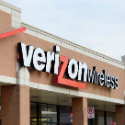
The FCC has granted Verizon permission to move ahead with fixed 5G deployments before 2018, revealed senior executives during the operator's second-quarter earnings call held on Tuesday.
The Federal Communications Commission (FCC) has approved Verizon's request to lease 28GHz and 39GHz high-frequency radio licenses from XO Communications Inc. 's subsidiary NextLink: Verizon stumped up nearly $2 billion for XO in February. (See Verizon Bags XO for $1.8B.)
The FCC took the view that Verizon's "aggressive" 5G deployment plans will be a benefit for the American consumer. Verizon is hoping to launch its fixed wireless 5G pilot in 2017. (See Verizon Hits 1-Gig+ in 5G Trials, Eyes Early Applications.)
"We're extremely pleased the FCC approved the XO lease agreement," Verizon CEO Lowell McAdam told analysts on the earnings call.
For all the latest news on 5G, visit the dedicated 5G site here on Light Reading.
NextLink has 93 28GHz licenses and nine 39GHz licenses that cover 67% of the US population. Verizon needs these Local Multipoint Distribution Service (LMDS) licenses because they are already set up to allow an operator to offer fixed wireless radio services within a 1.5 mile radius of the basestation.
Verizon is, effectively, collecting all the pieces it needs to start 5G deployments, once further tests are completed of course. Verizon CFO Fran Shammo said that 2017 will be a "development year" for 5G. "To get to a commercial launch and actually start to generate revenue -- I think that will come in very late '17 or '18," Shammo said during the earnings call. (See Verizon Could Take Fixed 5G Nationwide.)
This, it should be noted, is still a very aggressive claim to make in relation to commercial 5G services: Many operators are expecting to start to deploy initial 5G networks around 2020.
McAdam laid out one reason why this haste to get 5G connections might be attractive to Verizon: The CEO is expecting a "significant cost saving" from deploying a 5G home router, compared with the cost of delivering ultra-broadband services over a Fios fiber connection.
McAdam said Verizon has been testing connections at ranges of "500 yards or less," with multiple HDTV streams, virtual reality streaming devices and a large number of tablets.
"We've got a big deployment down in Dallas working with Ericsson and Nokia. We've got several in New Jersey and some down in Virginia," McAdam explained.
Next, the operator wants to test how the system does with vegetation and weather patterns outdoors in a typical "200 home development." The concern with vegetation and weather is that the vary narrow bands in millimeter wave radios can struggle to get through leaves, walls and other obstacles without smart antenna arrays and extremely guided, directional radio signals.
McAdam said the operator is expecting to place 5G radios every 1,000 meters or so in order to cover this gigabit fixed wireless test.
All of which means that Verizon will have to build out a much denser network in order to provide coverage: McAdam pointed out that this effort to densify has already started with its deployment of 4G LTE small cells.
"By aggressively moving to densify and then using that infrastructure for 5G, Verizon will stay on the leading edge for the next decade," McAdam claimed.
"All of this fixed frenzy will lay the foundation to build mobility use cases [for 5G] later in the decade," the CEO concluded.
— Dan Jones, Mobile Editor, Light Reading
About the Author(s)
You May Also Like




.jpg?width=300&auto=webp&quality=80&disable=upscale)







